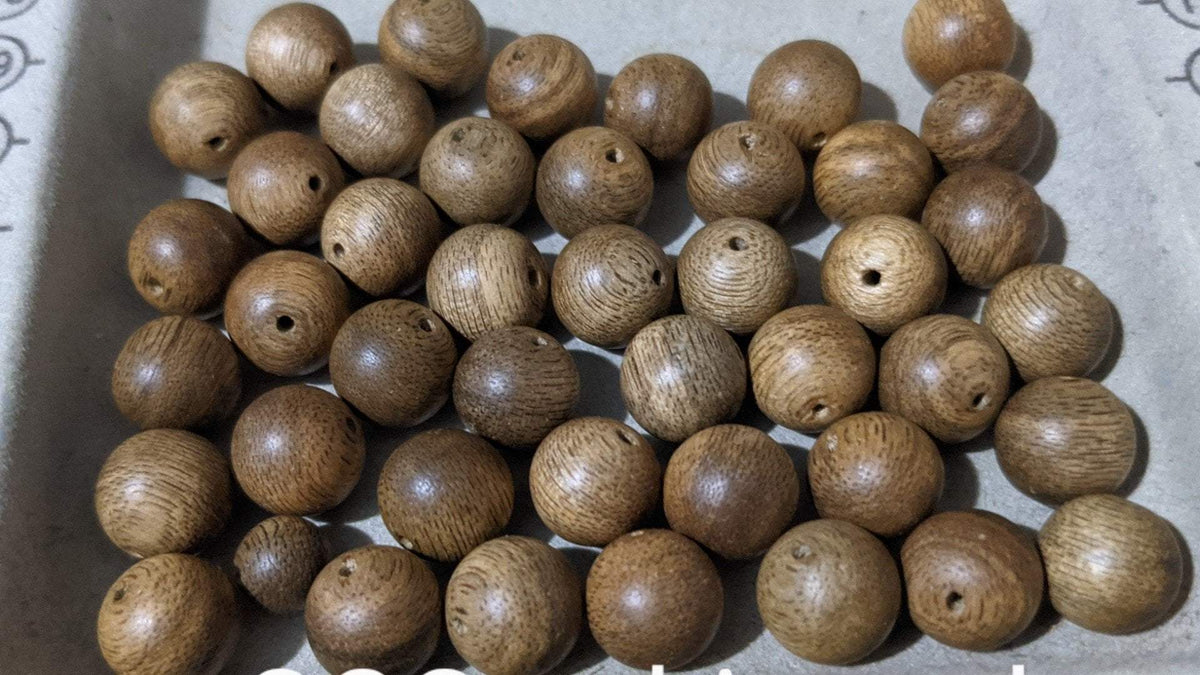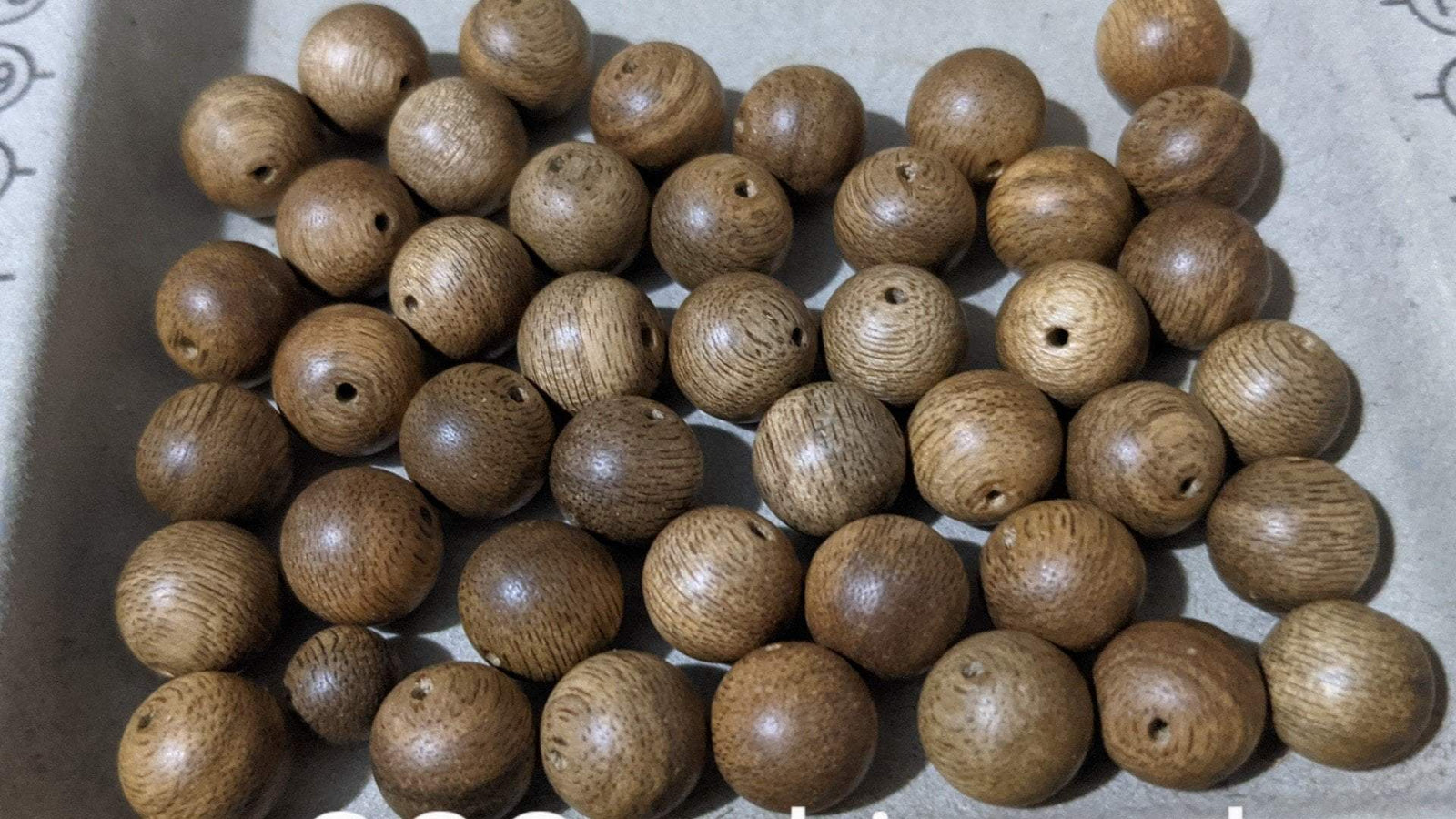
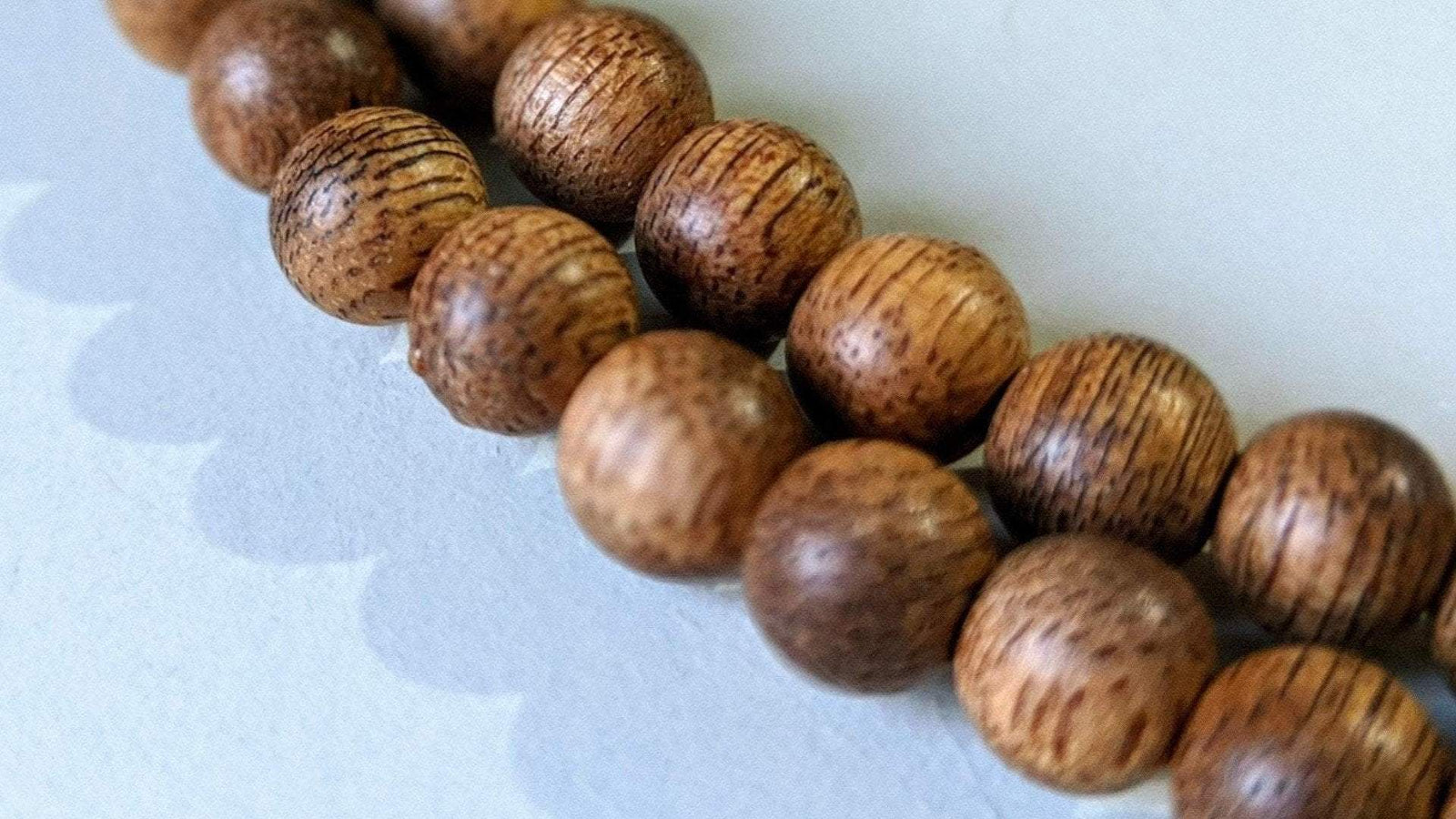
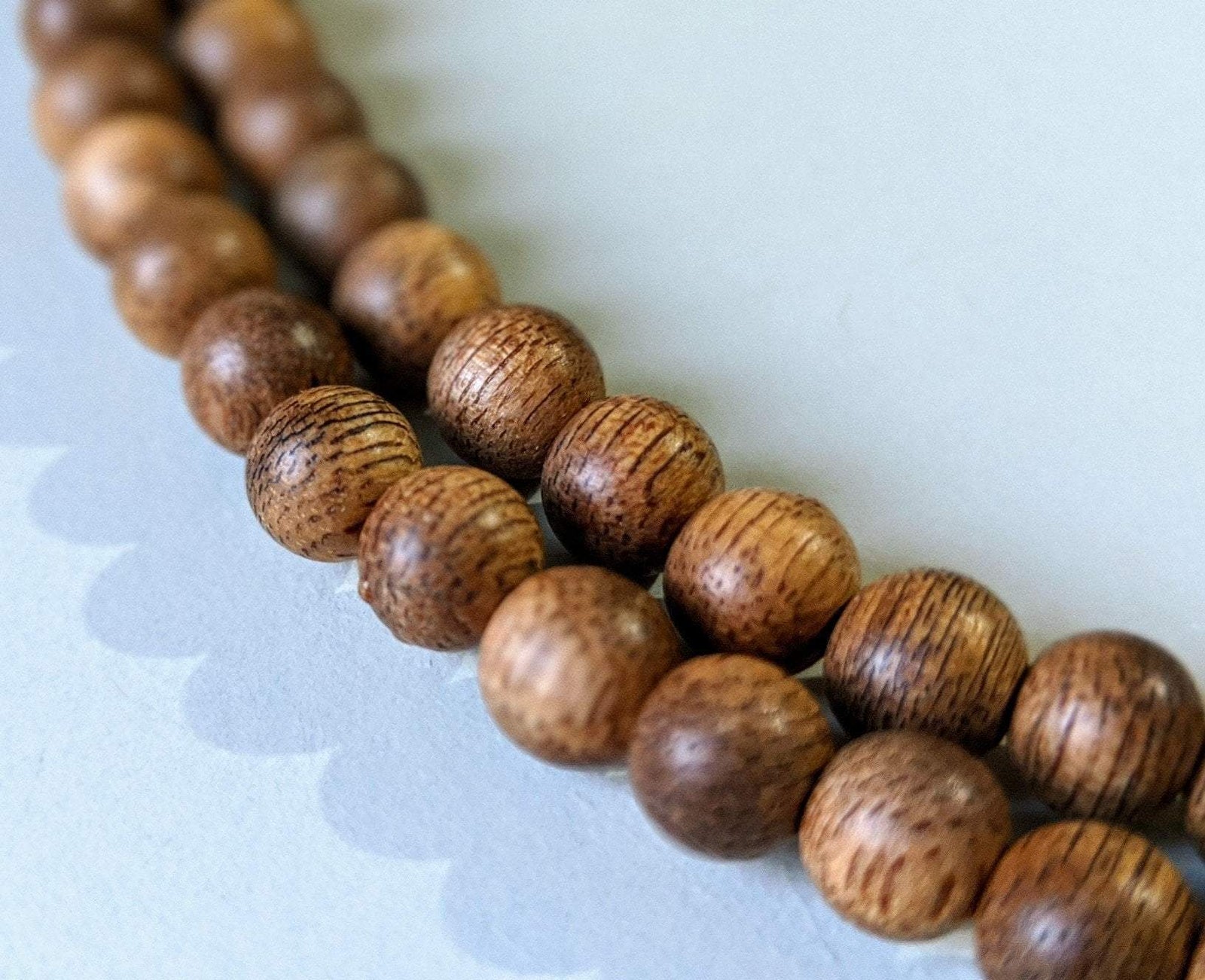
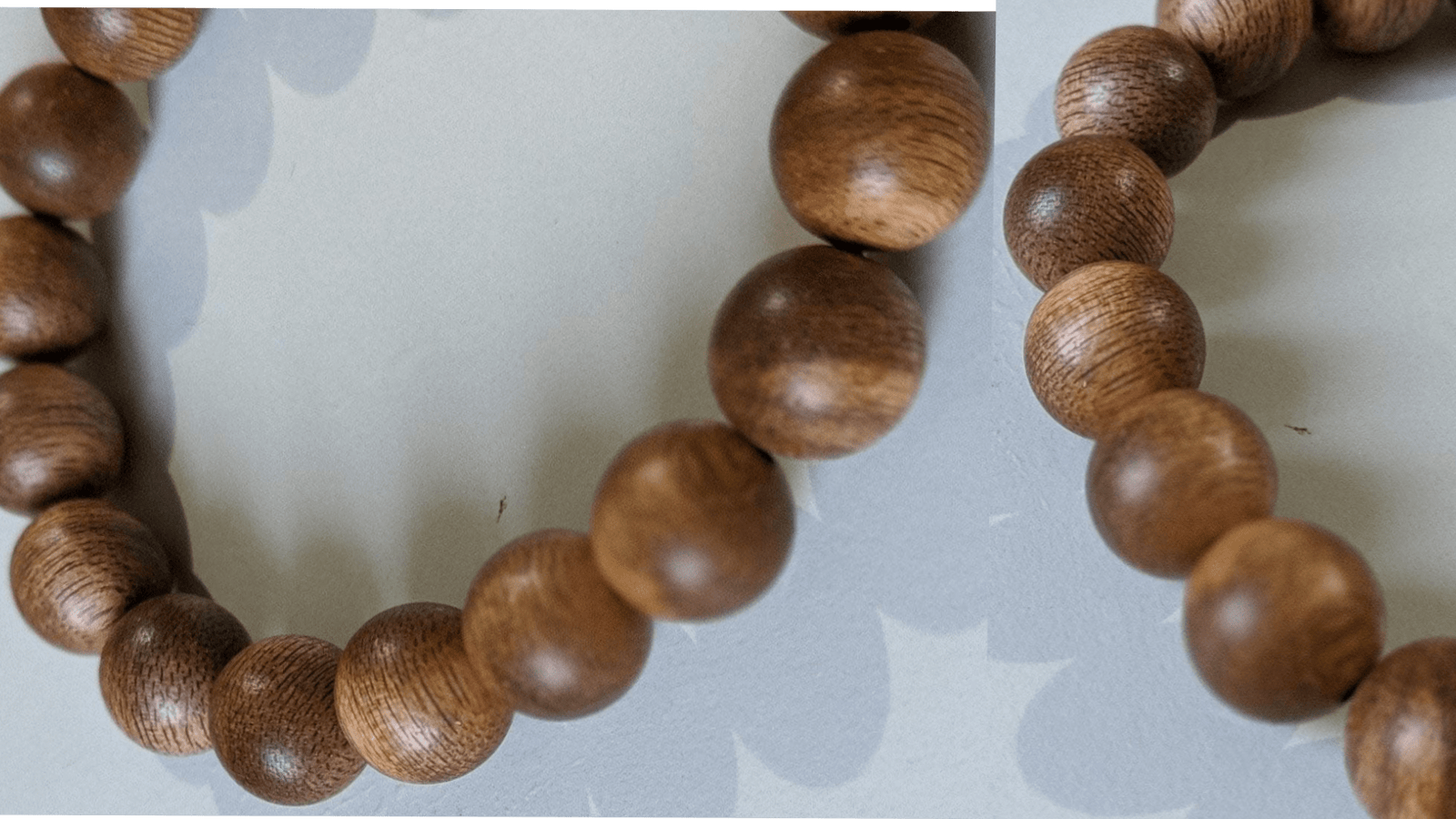
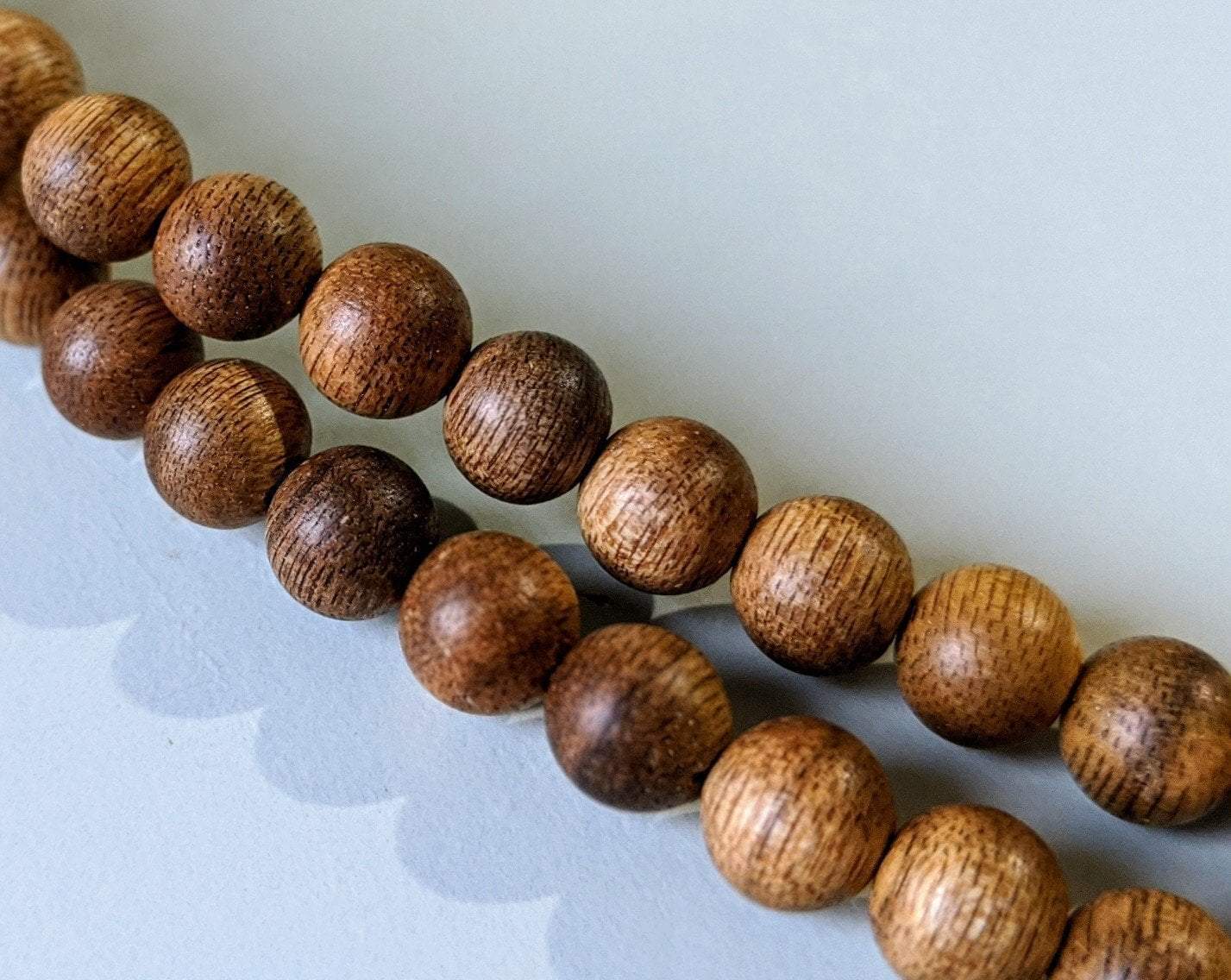
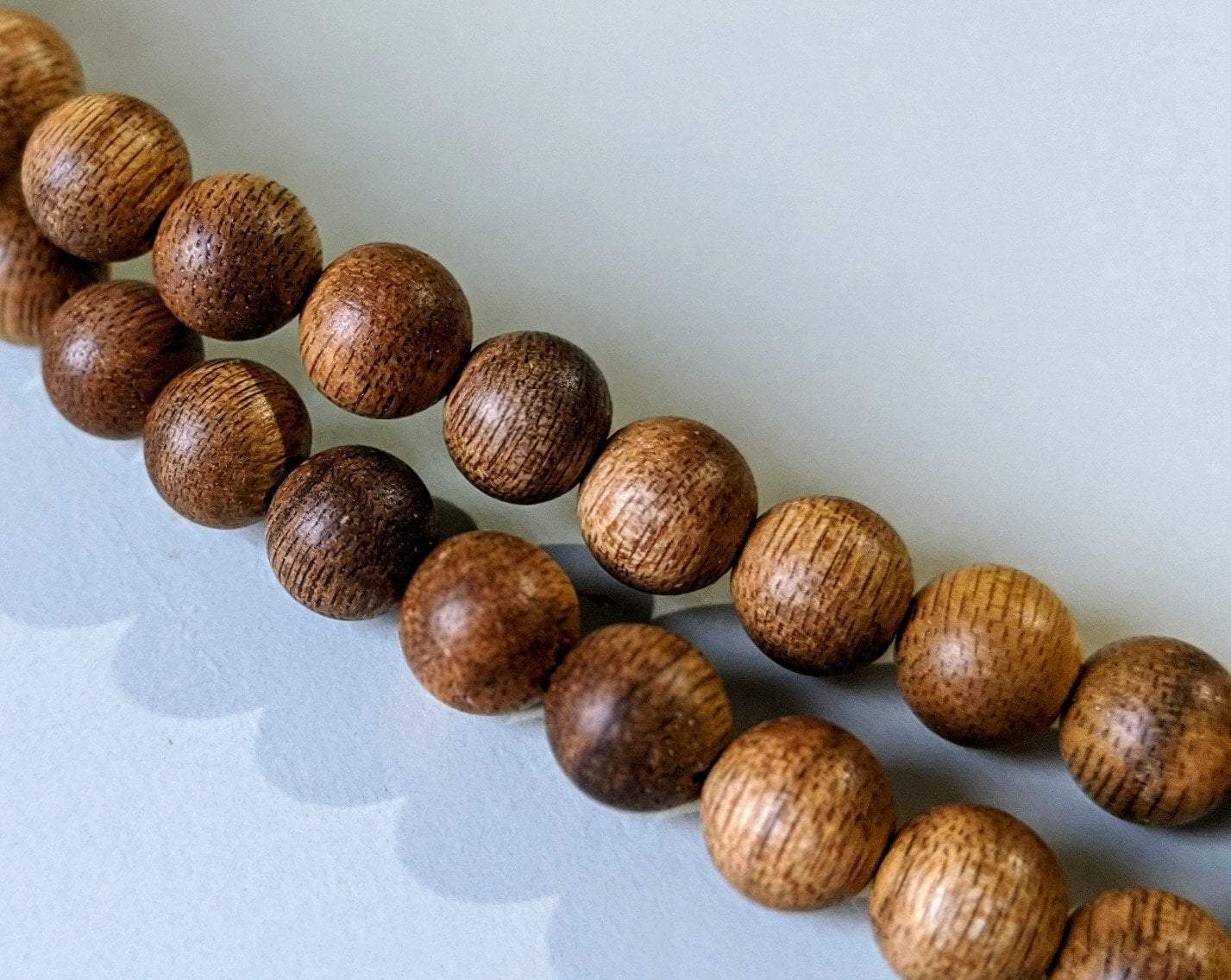
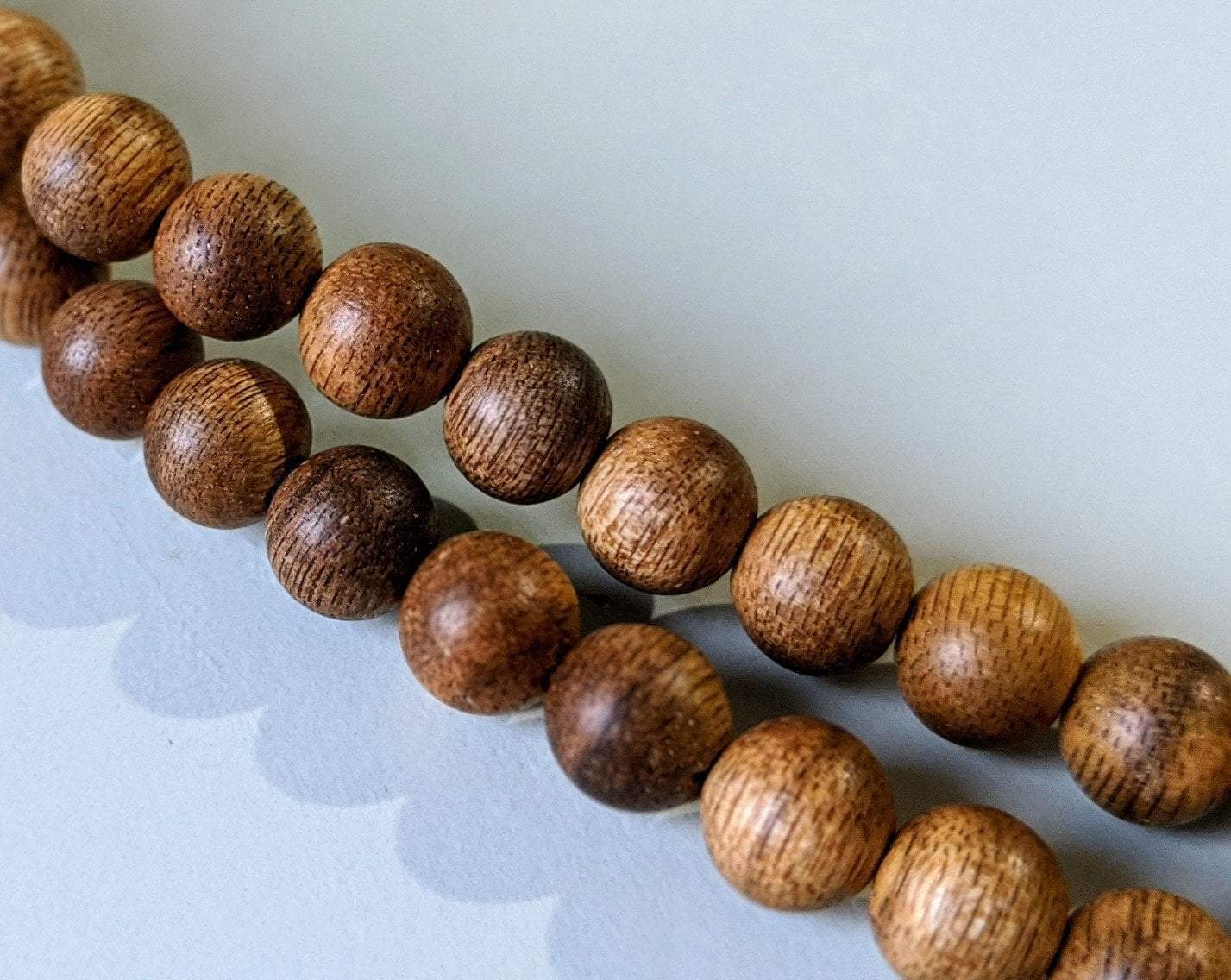
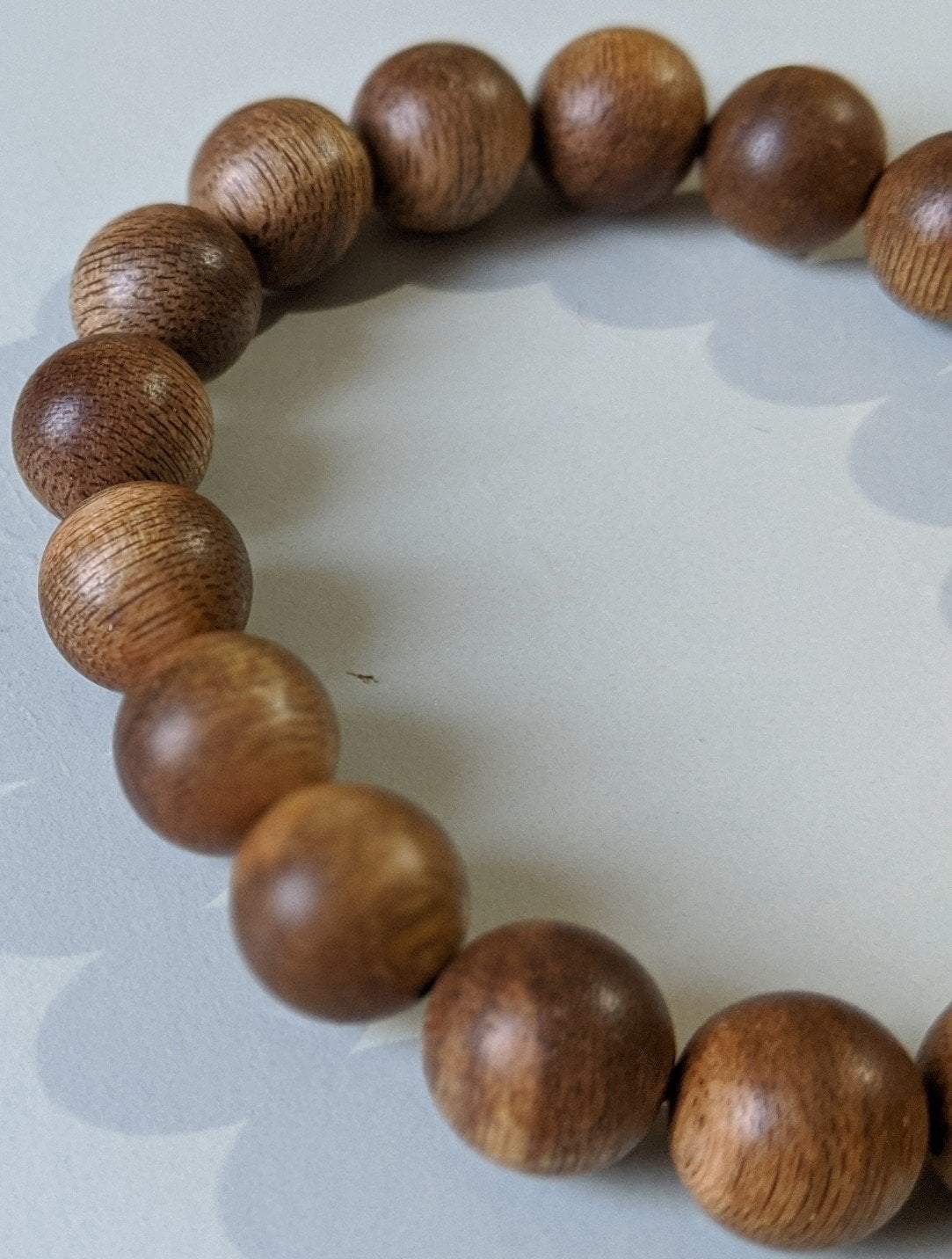
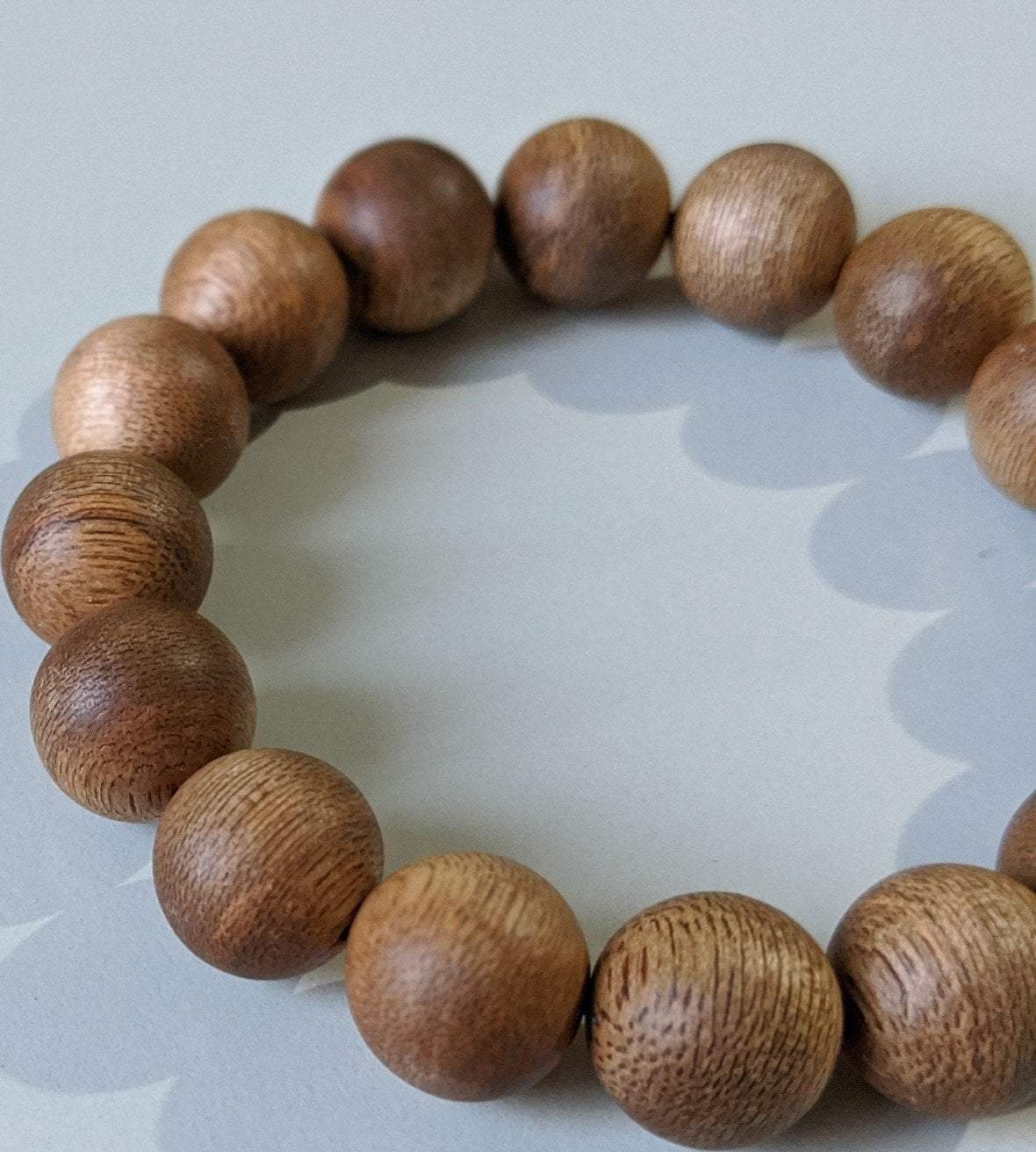
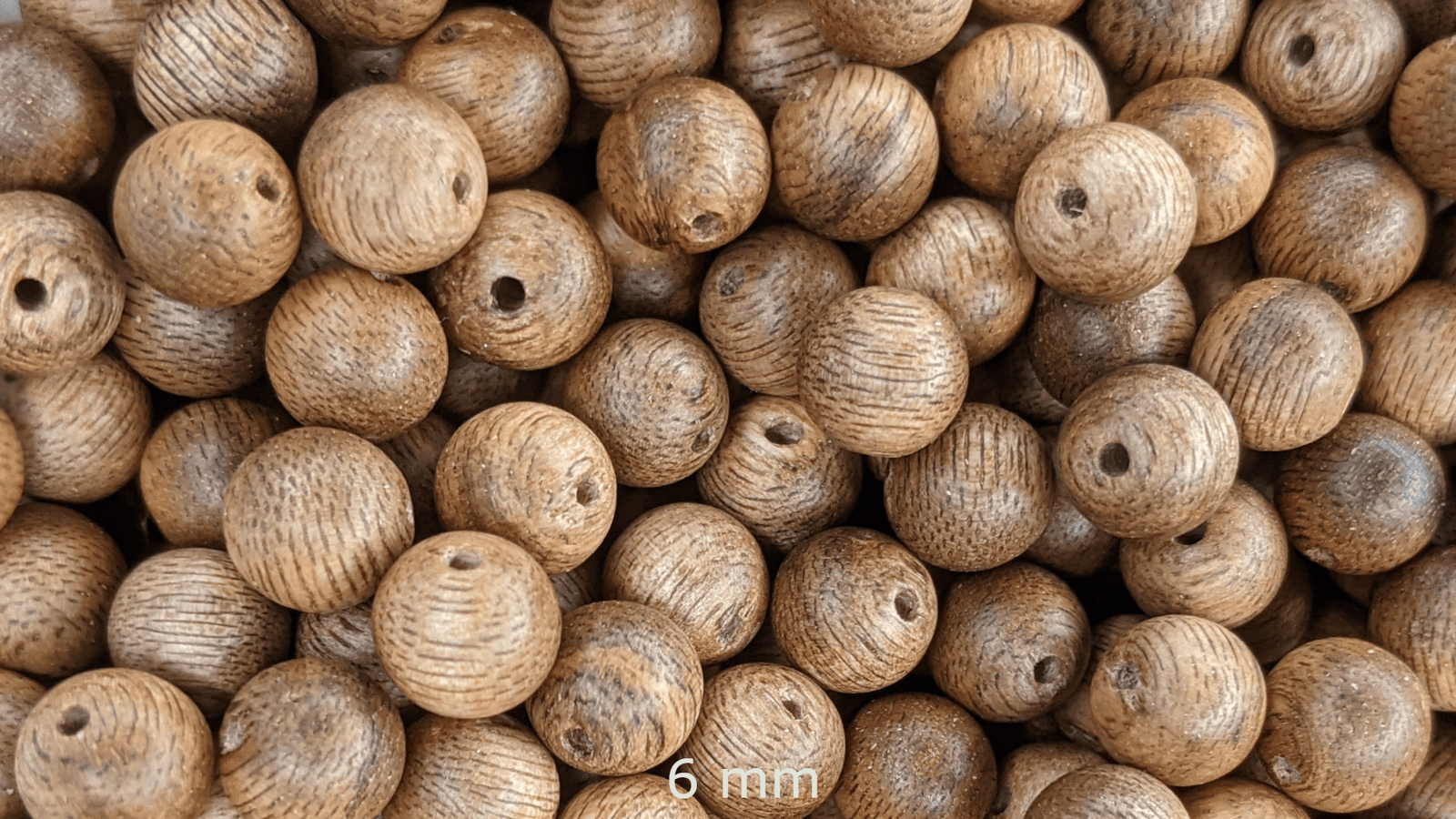

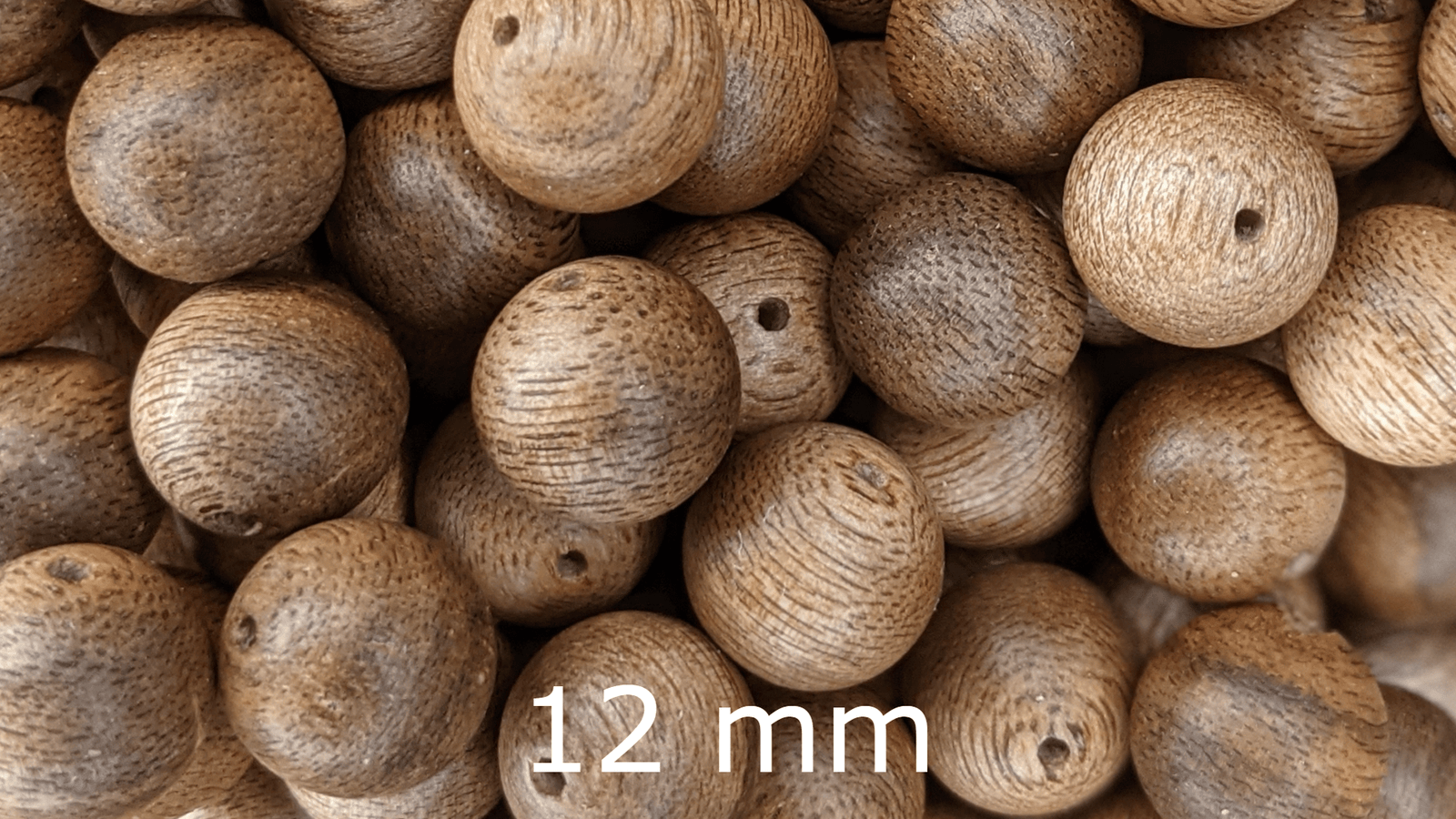
12 Premium Cultivated Agarwood Beads (mala and bracelet size) - The GGG
Please note you are looking at 12 individual beads, they are NOT strung together. For the purpose of illustration, please refer to the size below
(请注意,您看到的是12颗单独的珠子,它们并没有串在一起。为了说明,请参考下面的尺寸。)

I got caught unprepared.
One day, my phone vibrated.
- Customer: "Hi, Trent is speaking"
- Me: "Do you sell agarwood beads?"
- Customer: "Yes, I do."
- Me: "Sorry, where do I find them?"
- Customer: "On our website, you can find it under Agarwood Beads?"
- Me: "I can only see 108 mala and bracelets"
- Customer: "Yes, we only have mala and bracelets"
- Me: "But I want to make my own rosary agarwood beads. Do you sell these beads separately"
He caught me off guard.
Because we have not made one before. So at that time, I told him I could not do it
Later, I told Liliane about this conversation, and she decided to make a rosary to see what it looked like using agarwood beads.
I would like to share this with you.



But what if you would like to design a rosary agarwood necklace yourself?
What if you could pick and choose the gemstone and agarwood to create one with a special meaning?
What if you only need 12 high-quality agarwood beads?
Good news because I make these agarwood beads available for you so you could customise your own.
I realised that you may come from different backgrounds. You probably already know this but
Just for who do not know
I would like to share with you brief information from National Catholic Reporter about prayer beads.
The use of prayer beads is a time-honored tradition, tracing back to ancient practices of counting repetitive devotions. These beads facilitated prayer during everyday tasks and transitional moments. Initially, small stones were used to mark each prayer, dropped one after another.
Approximately 500 years before the birth of Christ, the practice evolved with people using knotted strings. Early prayer beads were crafted from simple materials like fruit pits, dried berries, bone fragments, and clay. Those of wealthier means often opted for beads made of precious stones and jewels.
The introduction of prayer beads in the Western Church occurred much later, around 1213, amidst the turmoil of the crusade against the Albigensian heresy in parts of Europe. Tradition holds that St. Dominic, seeking divine intervention, was guided in a dream by Mary to promote the rosary as a remedy for sin. The term 'rosary' is derived from the Latin 'rosarium', meaning a garland or chaplet of roses.
By the time of St. Dominic, various spiritual traditions had already established their unique forms of prayer bead practices. In Hinduism, for instance, the rosary, comprising 109 beads, has been a long-standing element. This includes 108 beads to represent the 108 names of God and one additional bead signifying the start of the prayer cycle, invoking Shiva, the deity symbolizing grace, peace, creativity, destruction, and triumph over evil.
Buddhism, founded by Sakyamuni from East India, also embraced prayer beads. In a notable instance, Sakyamuni advised a troubled king to use a string of 108 Bodhi tree seeds for prayer, reciting praises to the Buddha, the teachings (dharma), and the community (sangha). Another interpretation of this prayer translates to an homage to the 'jewel in the heart of the lotus', symbolizing compassion. The repetition of this mantra across the 108 beads is believed to dispel evil and foster peace and joy.
Islam, too, incorporates prayer beads, known as tasbih or subhah, consisting of 33 beads used in three cycles to honor the 99 names of Allah, signifying unity and divinity. These names include attributes like Mercy, Compassion, and Opener of the Way.
In the 1980s, the Anglican Church introduced its version of the rosary, featuring 33 beads to commemorate the years of Christ's life. This rosary is organized into groups of seven, reflecting the seven days of creation, a week's duration, and the church's liturgical seasons. These groups are interspersed with four larger beads, symbolizing the cross's significance.
Source: National Catholic Reporter
So, you may wonder: if prayer beads are for many religions, what about agarwood?
I want you to know that Agarwood is not just for one religion. It is mentioned in multiple religious scriptures.
Last week, I had a gentleman ask if I can replace some beads of his Zikra prayer. Originally he had 99 wild agarwood beads, but some were faded. He only wanted a few of them.
I sent him this page, and he was delighted to get it replaced.

"Can I use agarwood beads if I have no religion?"
See the wrist bracelet below? It does not have any religious meaning but many people like it because of its look

Occasionally, this question "is agarwood for religious use only?" comes up because many "Gods" use it. And you can use it too.
If you love wooden beads, then you will probably like these agarwood beads
Again, if you would like to use some gemstones with your bracelet or necklace then you might want to get a few of these beads instead of a 108 mala.
- Imagine you could create your own agarwood necklace
- Imagine the feeling of achievement after completing it
- Imagine wearing your own design from your own creation

Product Description:
Please click here for the bracelet and mala.
12 Premium Cultivated Agarwood beads from a sustainable agarwood plantation
Please note you are getting 12 individual beads of agarwood, NOT a full bracelet or a mala
(请注意,您将获得12颗单独的沉香木珠子,而不是一整串手链或念珠。)

